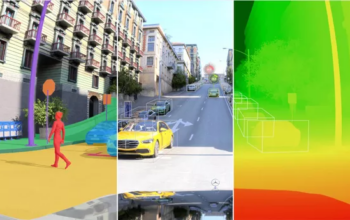The battery is the most crucial part of any car’s electrical system, second only to the alternator. When the engine isn’t operating, it supplies the power needed to run all of your high-tech gadgets, and when it is, it is crucial to the voltage regulator of the alternator’s correct operation. Let’s get to know about Car Battery Charging and Maintenance in details.
Modern car electrical systems require a battery in order to operate effectively, unlike earlier electrical systems that used generators and could do so. It’s crucial to know how to charge and maintain a car battery properly and safely since a dead battery prevents a car from starting and forces the alternator to work too hard, perhaps to the point of failure.

What about Car Battery Charging?
An external charger or the alternator are the two methods to charge an automobile battery. Whenever the engine is operating, the alternator normally charges the battery. The best approach to recharge a dead battery is with an external charger.
This is why the majority of routine battery use. Such as turning on the radio or dome lights with the engine off. Spontaneously recharges the battery the following time you start your vehicle. The alternator’s capacity to produce electricity rises as engine RPM rises. And no need of any surplus energy by accessories like your headlights may be utilized to recharge the battery.
On the other hand, your alternator might not always be able to provide enough power to run all of your accessories. For example, if you idle at a stoplight with your air conditioner, wipers, headlights, radio, and other amenities on. It’s possible to generate a load that is more than your alternator can handle. When this occurs, the battery’s stored energy will pick up the slack.
What Maximum Charge Can a Battery Support?
A automobile battery will normally measure between 12.4 and 12.6 volts when fully charged. And in excellent condition, with adequate reserve capacity to run a 25A load for nine to fifteen hours. A battery’s voltage will have fallen below 10.5 volts after being load for so long. And it most likely won’t be able to start the automobile.
It’s a good idea to steer clear of really putting a typical vehicle battery through this kind of operation. Even if individual batteries are there to demonstrate how long they can supply power to a certain load before dropping below a crucial voltage. A car battery’s capacity to hold a charge might potentially be harmed if over drain it.
Extreme temperatures and wear from the regular cycle of charging and discharging can lower the reserve capacity. Which explains why. In some cases, you may be able to leave your headlights on all day and still be able to start your car. But in others, you may return to a dead battery after doing a quick errand.
A Car Battery Charging
The alternative method of charging a car battery is to utilize an external charger when the alternator is inadequate or the battery is too depleted to start the engine.
The best approach to charge a fully dead battery is using a car battery charger. It uses AC power and provides 12V DC at relatively low voltages. When a dead battery is charged at an abnormally high voltage, the hydrogen will release more. That which might create a dangerous situation where the battery can explode.
This is why it’s crucial to use the same caution while connecting a vehicle battery charger as you would when connecting jumper cables. And also why it’s frequently a good idea to use a jump starter.
How to Hook Up a Car Battery Charger
Connecting a car battery charger is similar to jump-starting a vehicle:
- Verify that your battery charger is not in use. Unplug it if you’re unsure.
- Connect your battery’s positive terminal to the positive line from the charger.
- Connect the charger’s negative wire to a solid ground.
- Set the voltage and amperage on your battery charger appropriately.
- Set the timer if it has one and turn on your charger, or connect it in if you need to.
Important: Be very careful not to touch, move, or remove the cable while the battery is charging if you connect the negative cable to the negative terminal on your battery.
Using Jumper Cables to Charge a Car Battery
In light of this, although there is sometimes risky. It is also feasible to charge a dead battery to a certain extent using jumper wires. Starting and operating the donor vehicle for a period will enable its alternator to charge the dead battery once jumper wires is connect from it to the battery, engine, or frame of the car with a dead battery.
The donor vehicle’s accessories must all be off during this operation for the alternator to have enough power to recharge the dead battery. A few minutes will usually give the dead battery enough of a surface charge to start things going, depending on how dead the battery is.
The car’s alternator will take over after obtaining a jump start. And as long as there aren’t too many accessories running, driving the vehicle around will enable the battery to recharge. Even after obtaining a jump start, it’s still a good idea to connect a battery charger because alternators aren’t actually there to recharge completely dead batteries.
Maintaining a Car Battery
The majority of car batteries require routine maintenance in the form of checking the electrolyte level and specific gravity. In addition to ensuring that the battery maintains a decent level of charge. Usually by not keeping the headlights on overnight.
Lead plates in each cell should constantly be covered by the electrolyte, a solution of sulfuric acid and water. As prolonged exposure to the air might lead to problems.
The battery usually needs to charge if the specific gravity is low across all of the cells. After charging the battery, if the specific gravity remains low, it is often a sign that the battery should change. It suggests an internal problem if the specific gravity is just low in one cell. In which case charging the battery can be hazardous.
Batteries may go dead for a variety of reasons, and there comes a point in every car battery’s life when it’s just time to go on, even if a vehicle’s alternator is capable of keeping its battery charged under normal conditions.
Author’s Recommendation
The Absolute Beginner’s Guide to Electric Vehicles
Updatable Cars Could Be the Future of an Autonomous Vehicle
Selecting the Right GPS Screen Size
Frequently Asked Questions
1. Are all automobile batteries now free from maintenance?
Things to know about maintenance-free battery systems for automobiles. Nowadays, almost all lead-acid batteries, whether they are traditional wet batteries (SLI) or contemporary AGM batteries, require little to no maintenance. This indicates that it is not essential to top off with distilled water. I think you got the answer for the question!
2. How many times can I charge my car battery?
You’ll want to keep the battery alive throughout those cold months since idle batteries can actually lose their charge. Batteries need to be recharged every six weeks to stay in good condition. This does not imply, however, that the battery should be left on a charger because doing so can reduce its lifespan. Any way keep your eyes on the well being of your battery.
3. What are the maintenance-free battery’s drawbacks?
- unable to fix.
- the project is essentially over id the seal break
- high upfront costs.
- It may be deadly if an internal system fails.
- If the battery is completely out of charge, a jumpstart is not feasible. And many more..
4. Does Car Battery Charging make it last longer?
You’ll want to keep the battery alive throughout those cold months since idle batteries can actually lose their charge. Should charge batteries every six weeks to stay in good condition. This does not imply, however, that the battery should be left on a charger because doing so can reduce its lifespan.
5. How many times can I recondition my Car Battery?
Reconditioned car batteries: an explanation. Reconditioned automobile batteries are created by reviving old, dead cells to give them a healthy life and charging capability. When you can still recycle old batteries one to three times, it would be a complete waste to just toss them away.


